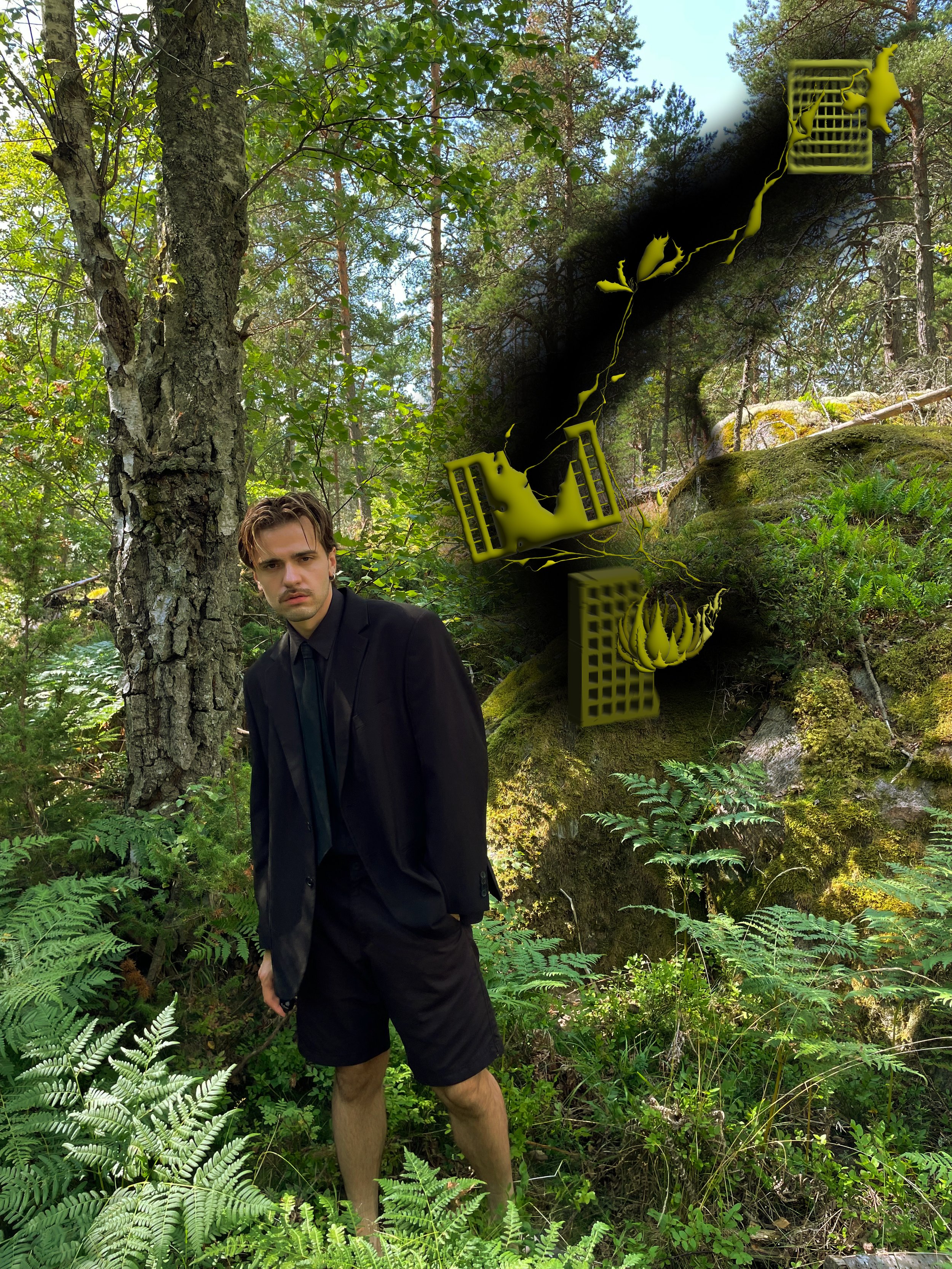Interview with GO.RA
Your work often grapples with deep concepts of deconstruction, identity, and the intersection of human bodies and landscapes. Could you elaborate on how these themes manifest in 'landescape #A2A37C' and what role the landscape plays in shaping the human experience?
In my work, I deconstruct and transform both myself and the landscape, examining them as micro-components of a larger whole. My approach is rooted in scientific, historical, and psychological analysis to understand how the landscape interacts with my internal changes and emotions. Each 'landescape' project is a manifestation of this interaction, a visualization of the physics of body and space. Throughout the process, a third dimension emerges — a micro-level reality that is always present and never fully dissolves into either myself or the landscape.
The landscape is not just a background; it is an active participant that influences the transformation of self-perception. It becomes a space of boundaries where we, as individuals, constantly change and adapt, creating a synergy between the internal and external worlds.
In this piece, you investigate the landscape both physically and metaphysically. How do you reconcile these two approaches—scientific versus emotional or philosophical—in your work?
My approach to the landscape is inherently metaphysical, as I perceive it as a living system capable of reaction and interaction. While I do not romanticize the landscape, I am fascinated by the scientific nature of its processes. My project acts as a microscope, highlighting the second-by-second changes in the landscape, both physically and philosophically. By magnifying microscopic connections or worlds to the scale of the landscape, I shift perspectives. This change in proportions reveals a fundamental law of the universe — the necessity of destruction to create something new. This duality between scientific and philosophical approaches helps me understand the landscape as a constantly evolving entity, reflecting the processes of life itself.
The concept of "annihilation" within the landscape is striking. How does this idea of destruction relate to your own identity and personal history as an artist from Ukraine?
The concept of "annihilation" for me signifies not merely destruction but transformation — an interaction that creates a new form. My forced relocation due to the full-scale invasion of Ukraine compelled me to rethink my place in a new environment, experiencing both loss and the potential for transformation. This idea of annihilation has become a reflection of the internal reconstruction process — the destruction of familiar structures and the emergence of something new. In my practice, I use this concept as a metaphor for adaptation and reinterpretation.
As you present this work in the context of an urban public space, what do you hope the audience will take away from their interaction with the landscape in an unfamiliar, city setting?
The project establishes a dialogue between the landscape of Melbourne and the environment of #A2A37C, creating a metaphysical connection of interaction. Through this work, I aim to emphasize the multi-layered transformations that occur when the physicality of the landscape is transferred into a new form within the urban space. By integrating my work into the city’s context, I seek to highlight the attempt to exist beyond physical boundaries, inviting the audience to rethink their perception and experience of their surroundings. The landscape, as a dialogue, challenges existing paradigms and invites viewers to engage with their own concepts of reality and identity.
You often discuss metamodernism in your practice. How does this philosophy influence your portrayal of landscapes as dynamic and evolving entities, and how does it affect your broader artistic approach?
Metamodernism allows me to explore fluidity, where multiple truths coexist, and the process of deconstruction and reconstruction becomes a continuous cycle. This philosophical stance influences my artistic practice by embracing contradictions, oscillations, and the coexistence of opposing ideas — destruction and creation, chaos and order, the familiar and the foreign.
In the 'landescape' project, metamodernism provides a framework for exploring landscapes as both tangible and metaphysical spaces. It recognizes the landscape as an active participant in the narrative, constantly interacting with human presence and its environment.
Metamodernism impacts my broader artistic practice by encouraging a sense of exploration, curiosity, and openness. It allows me to present my work as an ongoing process, where questions lead to more questions, and the journey toward understanding becomes as important as the final outcome. This dynamic and evolving philosophy aligns with my pursuit of truth and resonates deeply with the ever-changing nature of landscapes and the human experience.
Interested in these works? Or want to learn more about the artist & their art?
Artist’s details below:
Instagram: @go.__ra
Website: https://gora.world



Title: landescape #A2A37C. Medium: digital. Note: Contact artist directly using their details on this page for price & other information


